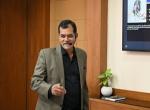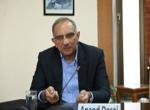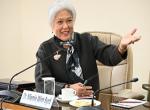As part of VIF’s ongoing series of talks on issues of national importance, contemporary as well as historical, held every month under aegis of Vimarsha, Amb G Parthasarathy, former diplomat and author, was invited on 02 Feb 2017 to deliver a talk on the role played by India’s first Deputy Prime Minister and Home Minister, Sardar Vallabhbhai Patel, towards India’s post-independence unification, notably the integration of princely states. A large gathering of intellectuals, comprising former bureaucrats, retired military commanders and media professionals, among others, attended the invitation-only event and enthusiastically interacted with the speaker following the lecture.
In his brief opening remarks, General NC Vij, Director VIF, paid rich tributes to Sardar Patel for his inspiring leadership as also his administrative skills, evidenced most notably in the way he successfully maneuvered the integration of over 560 states into a united and independent nation, a feat that remains unmatched in world history to this day. A pragmatic leader that he was, Sardar Patel used hands-on approach in dealing with complex political problems of his time which grew mostly out of an insidious British intrigue to leave behind a truncated and weaker India. Even more importantly, he emerged as a great stablising force amid the communal and political turbulence that followed the partition. Even while he wore the mantle of a firm and decisive leader, Sardar Patel remained highly compassionate and understanding, a leader who could be easily approached for any cause. The Director, however, cautioned against comparing the achievements of Sardar Patel with those of his contemporary leaders the environmental context having undergone sea changes.
As the head of a task force, constituted in 2015 by Prime Minister Mr. Narendra Modi, Amb G Parthasarathy, along with other members of his team, put together after eighteen months of rigorous research, an authoritative account of Sardar Patel’s achievements for wider dissemination to the public at large. He shared with the audience key findings of the Task Force’s outcome, justifiably titled as ‘Ek Bharat, Shreshtha Bharat' (One India, Excellent India) in light of Sardar Patel’s outstanding contribution towards uniting India. The speaker underlined that Sardar Patel’s achievements far outweigh the achievements of Germany’s Bismarck and Italy’s Garibaldi, in light of India’s greater diversity and geographical expanse. Amb Parthasarathy however was pained to say that Patel did not get his due share of recognition commensurate to his achievements. He however stressed that memories of Sardar Patel need to be preserved and propagated to the future generations. This was particularly needed to address the mismatch between the country’s rising challenges and the absence of a suitable role model for the young Indian generation to emulate. He further stressed that younger generations must know what ideals lay behind uniting India.
Two other connected issues were also discussed. One was regarding a magnificent statue of Sardar Patel, slated to be the tallest statue in the world, coming up opposite the Narmada Dam in Gujrat. The second issue was a digital exhibition, ‘Uniting India - Sardar Patel’, set up by the Union Culture Ministry at the National Science Centre in New Delhi. The exhibition is planned to be taken to other parts of India as a part of an integrated plan conceptualised by the Prime Minister, and aimed at reviving the political legacy of Sardar Patel. W
While urging the VIF fraternity to undertake a visit to the exhibition, Amb Parthasarathy highlighted key features of the exhibition, the instrument of accession signed between Hari Singh, the ruler of Jammu and Kashmir, and the Dominion of India being one of them. Parts of the talk also focused upon the accession of key states like Hyderabad, Junagarh and Manipur etc. The session witnessed a brisk participation from the audience.








